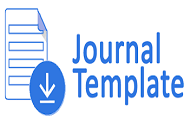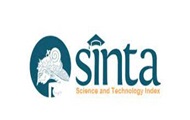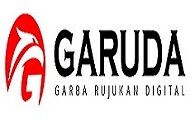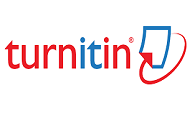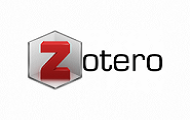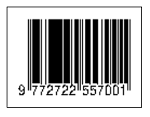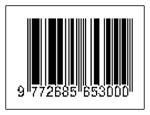Analisis Piutang Usaha dan Tingkat Laba yang Dihasilkan Pada Perusahaan PT. Astra Agro Lestari Tbk yang Terdaftar di BEI Tahun 2018-2020
DOI:
https://doi.org/10.31851/jmediasi.v7i2.18368Abstract
ABSTRACT
This study aims to analyze accounts receivable and the level of profit generated at the company PT. Astra Agro Lestari Tbk which is listed on the Indonesia stock exchange for the period 2018-2020. The population of this study is the company's financial statements PT. Astra Agro Lestari Tbk listed on the IDX. The sample in this study is the financial statements in the form of balance sheets and income statements at the company PT. Astra Agro Lestari Tbk period 2018-2020. The data analysis technique used in this research is quantitative descriptive and is calculated using activity ratios and profitability ratios. The results of the analysis with the activity ratio at PT. Astra Agro Lestari Tbk in 2018 the calculation of accounts receivable with an average receivable turnover of 32 times, in 2019 it rotated 35 times and in 2020 it rotated 33 times. The results of the profitability ratio at PT. Astra Agro Lestari Tbk based on the calculation of return on assets in 2018 of 5.66%, in 2019 of 0.90% and in 2020 of 3.21%
Keywords: Accounts Receivable, Profit Rate.
ABSTRAK
Penelitian ini bertujuan untuk menganalisis piutang usaha dan tingkat laba yang dihasilkan pada perusahaan PT. Astra Agro Lestari Tbk yang terdaftar pada bursa efek Indonesia periode 2018-2020. Populasi penelitian ini adalah laporan keuangan perusahaan PT. Astra Agro Lestari Tbk yang terdaftar diBEI. Sampel dalam penelitian ini laporan keuangan berupa neraca dan laporan laba rugi pada perusahaan PT. Astra Agro Lestari Tbk periode 2018-2020. Teknik analisis data yang digunakan dalam penelitian ini adalah deskriptif kuantatif dan dihitung menggunakan rasio aktivitas dan rasio profitabilitas.Hasil analisis dengan rasio aktivitas pada PT. Astra Agro Lestari Tbk tahun 2018 perhitungan piutang usaha dengan rata-rata perputaran piutang berputar sebanyak 32 kali, tahun 2019 berputar sebanyak 35 kali dan pada tahun 2020 berputar sebanyak 33 kali. Hasil rasio profitabilitas pada PT. Astra Agro Lestari Tbk berdasarkan perhitungan return on asset pada tahun 2018 sebesar 5,66%, tahun 2019 sebesar 0,90% dan pada tahun 2020 sebesar 3,21%
Kata kunci: Piutang Usaha, Tingkat Laba.
References
Desiana, L., & Africano, F. (2019). Analisis Laporan Keuangan . Palembang: Cv. Amanah.
Elviza , & Rahmi, S. H. (2018). Analisis Piutang Usaha dan Tingkat Laba yang Dihasilkan Pada Perusahaan PT Astra Agro Lestari Tbk. yang Terdaftar di BEI Tahun 2015 - 2017. Kolegial, 6(2).
Mulyanti, S., Hati, R. P., Syafruddin, & Rivaldo, Y. (2021). Pendamping Pembuatan laporan Keuangan pada PT. Kagaya Manufaktur Asia. Jurnal Al Tamaddun Batam, 1 (1), 9-12.
Murhadi, W. (2017). Analisis Laporan Keuangan Proyeksi dan Valuasi Saham. Jakarta: Salemba Empat.
Shatu, Y. P. (2016). Kuasai Detail Akuntansi Laba & Rugi. Jakarta: Pustaka Ilmu Semesta.
Subramanyam, K. R., & Wild, J. J. (2014). Analisis Laporan Keuangan Financial Statement Analysis. Jakarta: Salemba Empat.
Sugiyono. (2021). Metode Penelitian Kuantitatif, Kualitatif, dan R&D. Bandung: ALFABETA,cv.
Sujarweni, V. W. (2021). Metode Penelitian Bisnis dan Ekonomi. Yogyakarta: Pustaka Baru Press.
Thian, A. (2021). Pengantar Akuntansi 1 & 2. Yogyakarta: ANDI (Anggota IKAPI).
Tumalun, T. L., & Pangerapan, S. (2019). Analisis Sistem Informasi Akuntansi Penjualan Kredit di PT Nusantara Sakti Cabang Manado. Jurnal EMBA, 7 (3), 3019-3029.
Weygandt, J., Kiimmel, P., & Kieso , D. (2019). Pengantar Akuntansi 1 Berbasis IFRS. Jakarta Selatan: Salemba Empat.
Downloads
Published
Issue
Section
License
Copyright (c) 2025 Jurnal Media Akuntansi (Mediasi)

This work is licensed under a Creative Commons Attribution-NonCommercial 4.0 International License.
The copyright of the received article shall be assigned to the publisher of the journal licensed under a Creative Commons Attribution-NonCommercial 4.0 International License in line with the license, authors and any users (readers and other researchers) are allowed to share and adapt the material only for non-commercial purposes. In addition, the material must be given appropriate credit, provided with a link to the license, and indicated if changes were made. If authors remix, transform or build upon the material, authors must distribute their contributions under the same license as the original.



